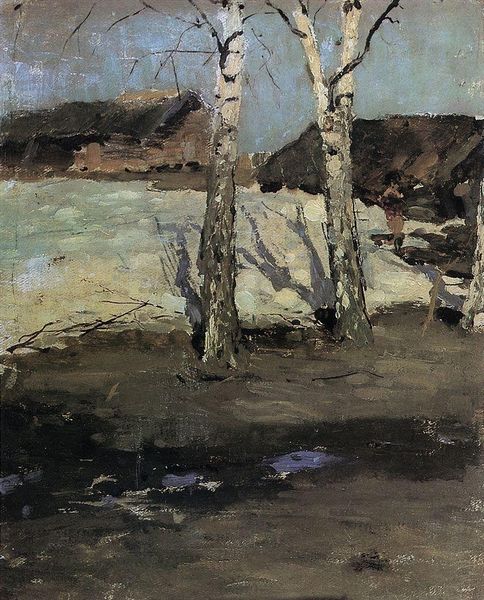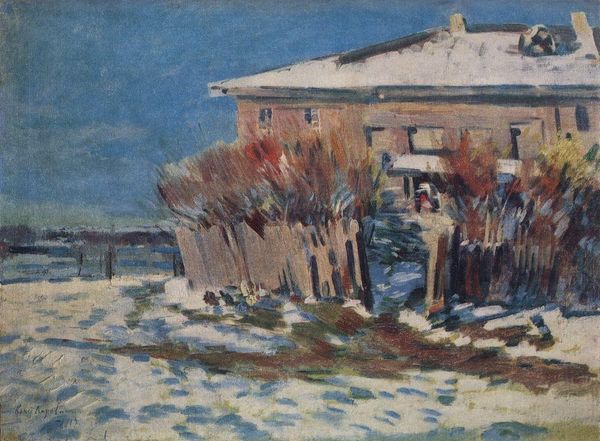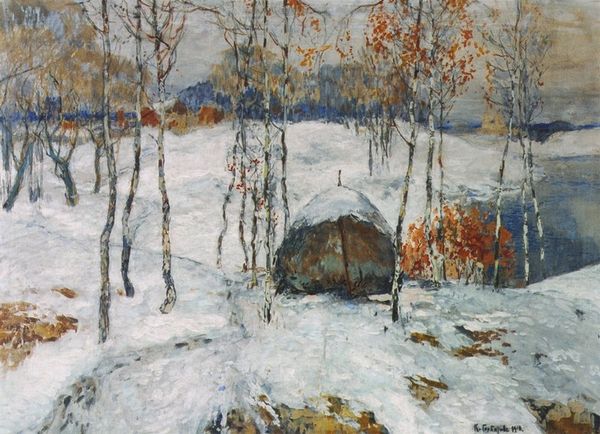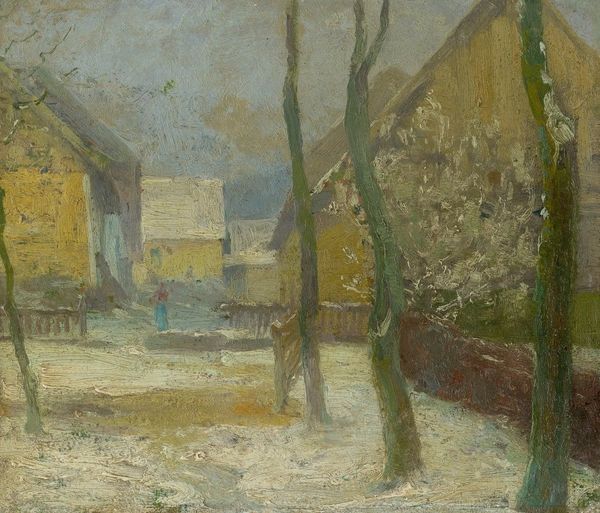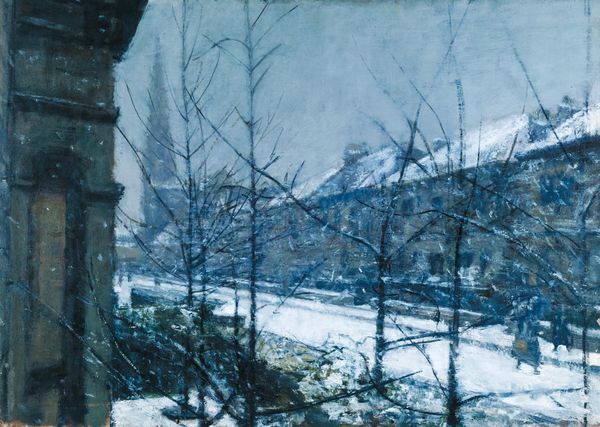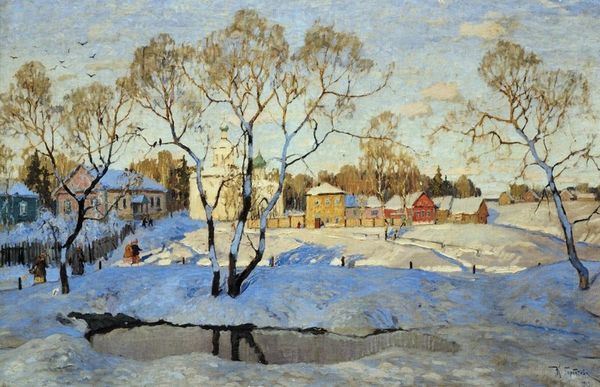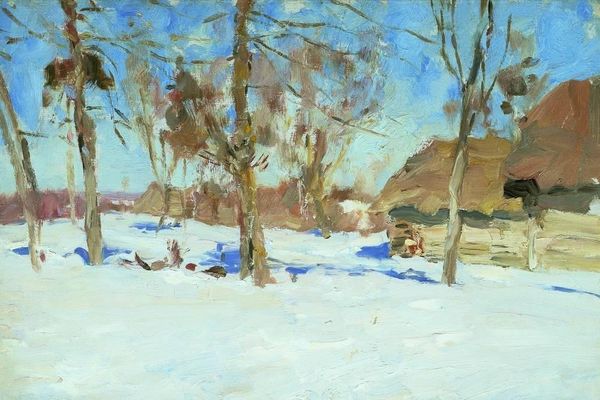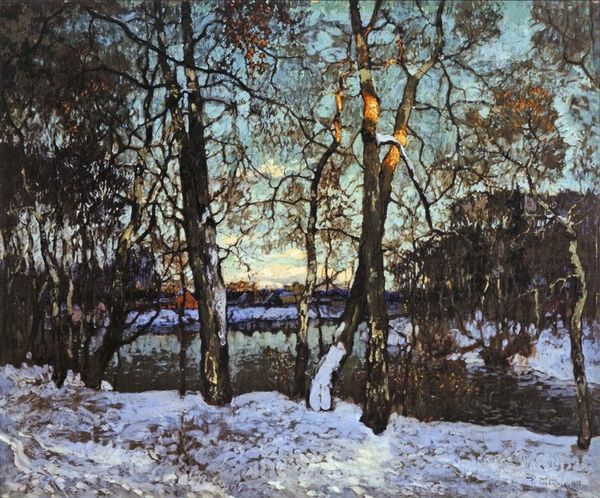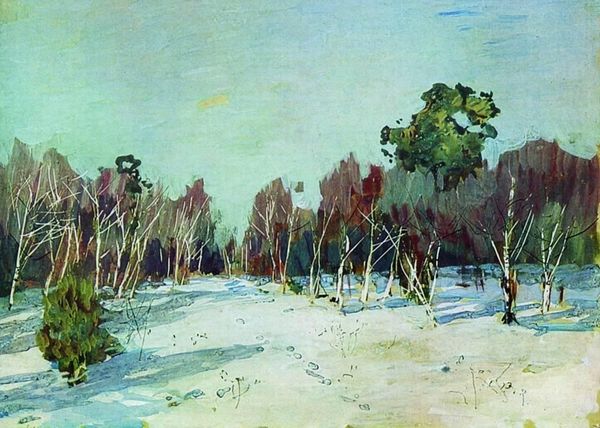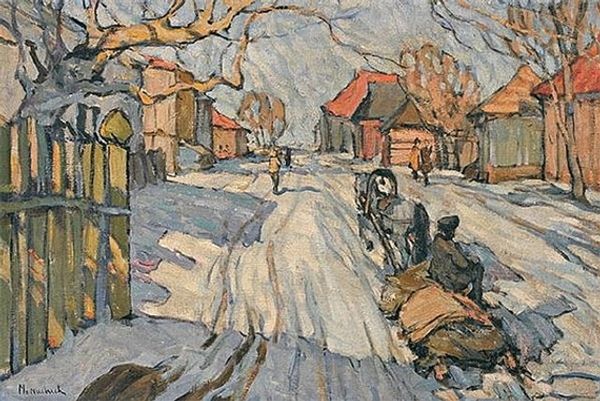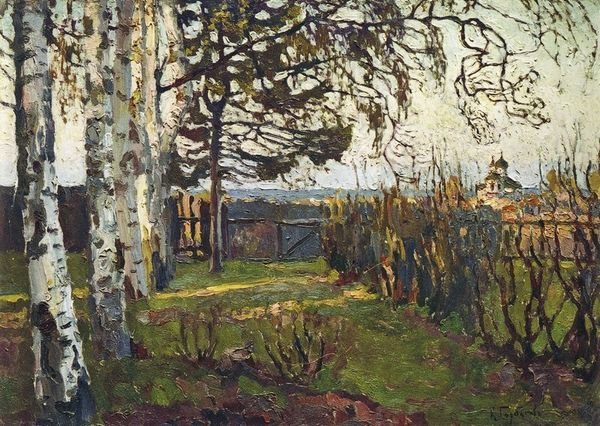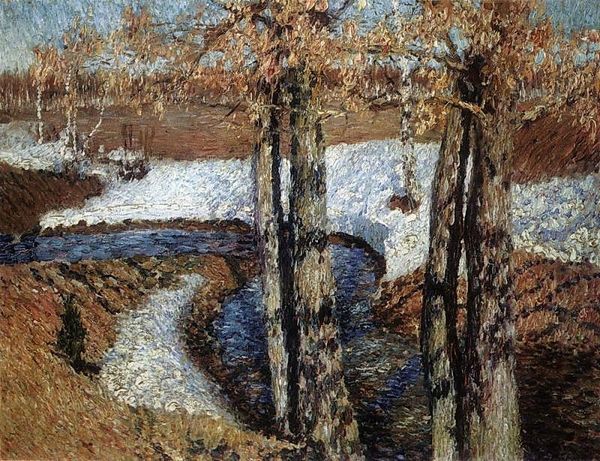
plein-air, oil-paint
#
tree
#
impressionism
#
plein-air
#
oil-paint
#
landscape
#
winter
#
house
#
impressionist landscape
#
oil painting
#
cityscape
#
building
Copyright: Public domain
Curator: Let's consider this intriguing work, "The Old Station at Eindhoven," painted by Vincent van Gogh in 1885, currently held in a private collection. Editor: My immediate impression is one of somber stillness. The muted palette of greens, browns, and whites evokes the bleakness of winter. The visible brushstrokes add a textural quality, almost like the roughness of a cold winter wind. Curator: Indeed. Painted en plein-air, you can see the layering of oil paint that captures the gritty industrial reality Van Gogh encountered in the Netherlands. It is interesting to see that this station, now relegated to ‘old’, was crucial to resource and goods distribution, connecting Eindhoven to broader trade networks. How does the formal composition strike you in relation to that function? Editor: Formally, the composition is divided horizontally, with the lower register occupied by the snowy ground and figures, while the buildings and bare trees dominate the upper part. The trees act as vertical accents, leading the eye upward but also creating a sense of confinement. The colour and form speaks of a melancholy that seems almost tangible. Curator: Consider the figures though, notice how they seem purposefully placed on the snowy expanse. These may well be railway workers that rely on the material operations of the train lines and that Van Gogh seeks to humanise in relation to the social transformation that the Railways offered. It invites reflection on labor, industrialization, and how that changed landscapes materially, in a very visceral way. Editor: Absolutely. The figures, though small, offer a grounding presence, especially within a limited canvas of what appear to be almost claustrophobic spatial dimensions. The light seems diffused and muted, adding to the overwhelming sensation. What could we assume Van Gogh was hoping to say through the artwork, here? Curator: Van Gogh perhaps sought to depict the hard labor in what some consider as his own "Dutch period," and highlight how industry shaped social realities through the introduction of railways. By drawing our eyes to the means of labor in the Eindhoven locale. The texture also offers a connection between subject and place, in terms of consumption as well. Editor: The painting’s deliberate application of color and its compositional arrangement result in more than just a landscape. It creates a scene that evokes feelings of isolation and, perhaps, even a silent resignation. It shows an artistic brilliance using humble materials. Curator: Agreed, from a socio-economic perspective it underscores the stark realities that come with transformation to offer an engaging snapshot from a significant time period that would shape Eindhoven through to our current moment. Editor: A striking blend of form and matter.
Comments
No comments
Be the first to comment and join the conversation on the ultimate creative platform.
